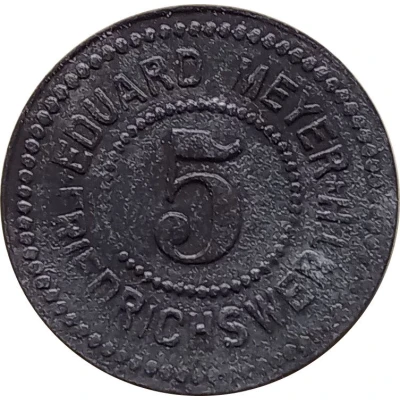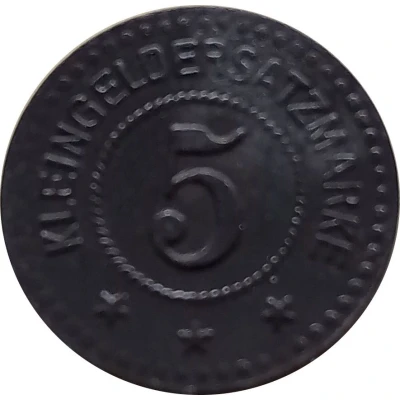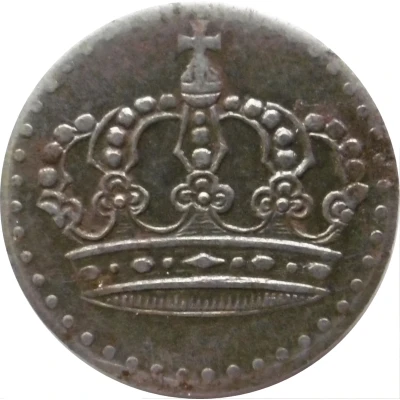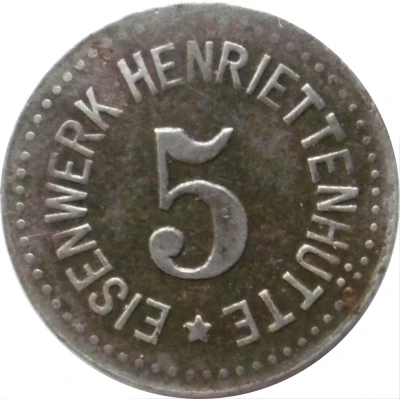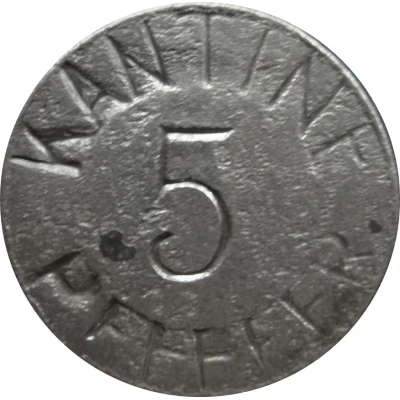
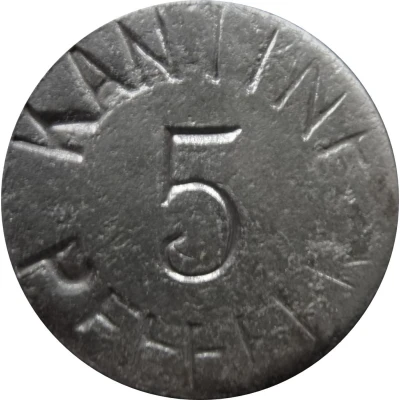

© Willem63 (CC BY-NC-SA)
5 Pfennigs - Gispersleben (Kantine Pfeffer) ND
| Iron | 5.2 g | 21.7 mm |
| Issuer | German notgeld (Germany) |
|---|---|
| Type | Standard circulation coin |
| Value | 5 Pfennigs (5 Pfennige) (0.05) |
| Currency | Mark (1914-1924) |
| Composition | Iron |
| Weight | 5.2 g |
| Diameter | 21.7 mm |
| Thickness | 2.0 mm |
| Shape | Round |
| Technique | Milled |
| Orientation | Medal alignment ↑↑ |
| Demonetized | Yes |
| Updated | 2024-10-04 |
| Numista | N#317242 |
|---|---|
| Rarity index | 97% |
Reverse
Legend surrounding denomination.
Script: Latin
Lettering:
KANTINE
5
PFEFFER
Edge
Plain
Comment
Menzel: BBBFa: Eisenkonstruktionen
Interesting fact
One interesting fact about the 5 Pfennigs - Gispersleben (Kantine Pfeffer) ND coin from German notgeld (Germany) made of Iron weighing 5.2 g is that it was issued during a time of economic crisis in Germany, specifically during the hyperinflation period of the 1920s. The coin was part of a series of emergency coins minted by local communities, known as "Notgeld," which translates to "emergency money" in English. These coins were used as a substitute for official currency, which was in short supply at the time. The 5 Pfennigs coin features an image of a kantine, or canteen, and was issued in the town of Gispersleben. It is a unique piece of history that reflects the economic challenges faced by Germany during that time period.
